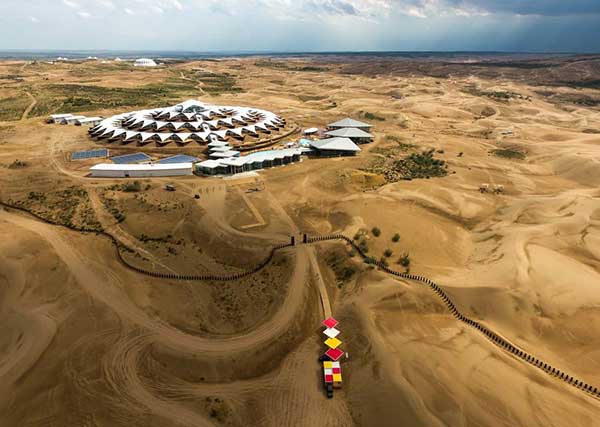Willow and wildlife thrive on eco-boost
 |
|
[Photo/Xinhua] |
The Inner Mongolia autonomous region - home to 40 percent of China's desert land - is one of the areas tasked with combating the process of desertification. The progress made in Ordos, one of the largest cities in the region, has won global recognition as a model of "greening" in the fight against "cancer of the earth".
Last year, 26.7 percent of Ordos was covered by woodland. In 2010, the figure was just 14.54 percent. Moreover, 75 percent of the land was covered by various plants, while seven years ago, the figure was 40 percent.
Wang Huailiang has worked as a forest ranger for 25 years. Speaking at his base at the Alutu Operating Area, one of eight State-run sand-control stations, he explained how different plants are used to control the sand.
According to Wang, the principle is simple: "From tall to short, from outer to inner", meaning that taller plants such as pine and aspen trees provide effective windbreaks for shorter trees, such as salix - a type of willow.
Once the sand has been partially secured by the roots of trees and shrubs, teams of workers use helicopters to sew grass seeds across a wide area.
Since it was established in 1956, the station's entire 2,050-hectares have been covered by green plants.
The eco-improvements have resulted in a rise in the level of precipitation. According to Wang, annual rainfall has soared to 400 millimeters from 200 millimeters in the 1960s.
The changes have not only affected the land, but also the area's wildlife.
"Sparrows and reptiles were the only wild animals seen here 30 years ago, but now, we often see rabbits, various bird species and even foxes," he said.
- Modern technology lights up Ordos in Inner Mongolia
- Classical music festival to be held in Inner Mongolia autonomous region
- Early autumn scenery by Hunhe riverside in Inner Mongolia
- Aobao Worship Festival celebrated in Inner Mongolia
- 5th naked oat flour cooking competition held in China's Inner Mongolia














